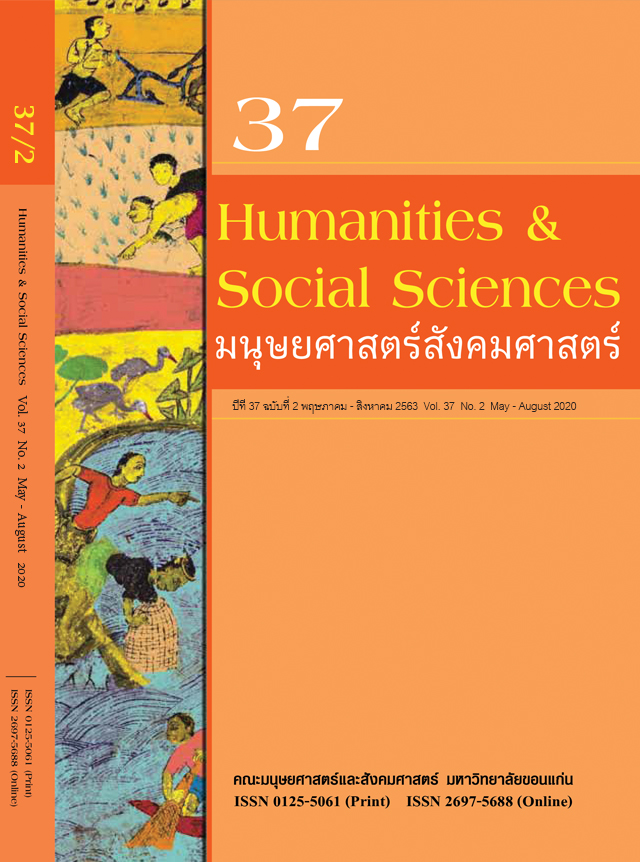ผลกระทบเศรษฐกิจดิจิทัล: การขยายตัวของรายจ่ายสาธารณะด้านการศึกษา และภัยคุกคามทางไซเบอร์
The Effect of the Digital Economy: The Growth of Public Expenditure on Education and Cyber Threats
Keywords:
The Effect of the Digital Economy, The Growth of Public Expenditure, Cyber ThreatsAbstract
In this digital economy era, technological progress plays an important role in the production process of goods and services that are extremely effective, and the effect of the digital economy also makes human's lifestyles more convenient. However, driving the digital-economic society to achieve the goals, which is based on the assumption of the Endogenous Growth Theory, the government needs to allocate public expenditures for promoting investments both the infrastructure and the development of human capital, especially educational subsidies for skill development, and research and development, continuously, sufficiently, and systematically. For this reason, the development of the digital economy and the growth of public expenditure on education tend to be in the positive correlation; that is to say, the more the government focuses on driving the digital economy, the more the government will increasingly allocate education spending as the basis for preparing human capital, research, and innovation. Furthermore, allocating this expenditure increased will also contribute the educational benefits and the country's economic growth as well. Nevertheless, developing the country towards a full digital economy may face cyber threats that are troublesome to escape, because all types of cyber threats have damaged the digital economy. Consequently, organizations involved in cyber security, both public and private sectors, should hastily prepare personnel skills and set a system and procedure to prevent whole cyber threats, continuously and promptly.
Keywords: Digital Economy, Public Expenditure, Education, Cyber Threats
References
Awan, J. H., Memon, S., Memon, S., Pathan, K. T., & Arijo, N. H. (2018). Cyber Threats/Attacks and a Defensive Model to Mitigate Cyber Activities. Mehran University Research Journal of Engineering and Technology, 37(2), 359-366.
Buracom, P. (2011). The Determinants and Distributional Effects of Public Spending in Thailand. Bangkok: D.K. Printing World Co.,Ltd.
Buracom, P. (2013). Public spending: allocative efficiency and international experiences (4 ed.). Bangkok: D.K. Printing World Co.,Ltd.
Cybersecurity Ventures. (2019). 2019 Official Annual Cybercrime Report. Retrieved from https://www.herjavecgroup.com/wp-content/uploads/2018/12/CV-HG-2019-Official-Annual-Cybercrime-Report.pdf
Edge Foundation. (2016). The digital revolution: the impact of the fourth industrial revolution on employment and education. Retrieved from London: http://www.edge.co.uk/sites/default/files/publications/digital_revolution_web_version.pdf
Gray, C., Lane, T. M., & Varoudakis, A. (2007). Fiscal policy and economic growth: lessons for Eastern Europe and Central Asia: The World Bank.
Henshaw, S. (2019, January 7). Cybercrime Statistics 2019: An In Depth Look at UK Figures and Trends. Retrieved from https://www.tigermobiles.com/blog/cybercrime-statistics/
IOCTA. (2018). Internet organised crime threat assessment 2018. Retrieved from https://www.europol.europa.eu/internet-organised-crime-threat-assessment-2018
ISOC, & TRPC. (2015). Unleashing the potential of the internet for ASEAN Economies. Retrieved from https://www.internetsociety.org/wp-content/uploads/2017/08/ISOC_ASEAN_Digital_Economy_Report_Full_s.pdf
Kearney, A. (2015). The ASEAN Digital Revolution. Retrieved from http://www.southeast-asia.atkearney.com/documents/10192/6986374/ASEAN+Digital+Revolution.pdf/86c51659-c7fb-4bc5-b6e1-22be3d801ad2
Komchadluek. (2019, January 2). Cybercrime statistics in 2018. Retrieved from http://www.komchadluek.net/news/lifestyle/357528
Magazzino, C. (2014). The relationship between revenue and expenditure in the ASEAN countries. East Asia, 31(3), 203-221.
Malisuwan, S. (2019, February 4). Cyber Crime: Threats of New Economy. Retrieved from https://www.beartai.com/article/beartai-ict/66607
MRC. (2018, June 20). Financial Impacts of Cybercrime. Retrieved from https://merchantriskcouncil.org/news-and-press/mrc-blog/2018/financial-impacts-of-cybercrime
Musgrave, R. A., & Musgrave, P. B. (1989). Public finance in theory and practice. (5 ed.). New York: McGraw-Hill Book Co.
Nair, M., Han, G., Lee, H., Goon, P., & Muda, R. (2010). Determinants of the digital divide in rural communities of a developing country: The case of Malaysia.
NSO. (2018). Education Statistics. Retrieved November 10, 2018, from National Statistical Office http://statbbi.nso.go.th/staticreport/Page/sector/TH/report/sector_03_47_TH_.xlsx
NSO. (2019). Percentage of households accessed to internet (2007-2017). from National Statistical Office http://statbbi.nso.go.th/staticreport/Page/sector/EN/report/sector_16_12_EN_.xlsx
Oxford Dictionaries. (2019). Definition of cybercrime. Retrieved from https://en.oxforddictionaries.com/definition/cybercrime
PwC Growth Markets Centre. (2018). The Future of ASEAN - Time to Act. Retrieved from https://www.pwc.com/gx/en/growth-markets-centre/publications/assets/pwc-gmc-the-future-of-asean-time-to-act.pdf
Risk Management Center. (2017). Cyber threats. Retrieved from Bangkok: https://op.mahidol.ac.th/rm/wp-content/uploads/2017/08/CYBER-THREATS.pdf
RSA. (2018). 2018 Current state of cybercrime report. Retrieved from https://community.rsa.com/docs/DOC-86796
Szeles, M. R. (2018). New insights from a multilevel approach to the regional digital divide in the European Union. Telecommunications Policy.
Tapscott, D. (2015). The digital economy: Rethinking promise and peril in the age of networked intelligence. New York, N.Y.: McGraw-Hill.
TechTalkThai. (2018, July 1). The survey of Microsoft and Frost & Sullivan pointed out that cybercrime causes economic loss to Thai enterprises up to 86 billion baht. Retrieved from https://www.techtalkthai.com/microsoft-frost-sullivan-cybersecurity-economics-cost/
TechTalkThai. (2019, November 26). Summary of trends in cyber threats and security in 2020. Retrieved from https://www.techtalkthai.com/cdic-2019-threat-landscape-and-cybersecurity-trends-in-2020/
TechTerms. (2019). Cybercrime Definition. Retrieved from https://techterms.com/definition/cybercrime
ThaiCERT. (2019). Cybercrime Statistics. Retrieved February 18, from Electronic Transactions Development Agency https://www.thaicert.or.th/statistics/statistics-en.html
Thansettakij. (2017, March 28). The rise of cybercrime: The impact of the digital age. Retrieved from http://www.thansettakij.com/content/136878
Tsuji, M., Ueki, Y., Shigeno, H., Idota, H., & Bunno, T. (2018). R&D and non-R&D in the innovation process among firms in ASEAN countries: Based on firm-level survey data. European Journal of Management and Business Economics, 27(2), 198-214.
UN. (2018). The new digital revolution: From the consumer internet to the industrial internet. Retrieved from https://repositorio.cepal.org/bitstream/handle/11362/38767/S1600779_en.pdf?sequence=4&isAllowed=y



